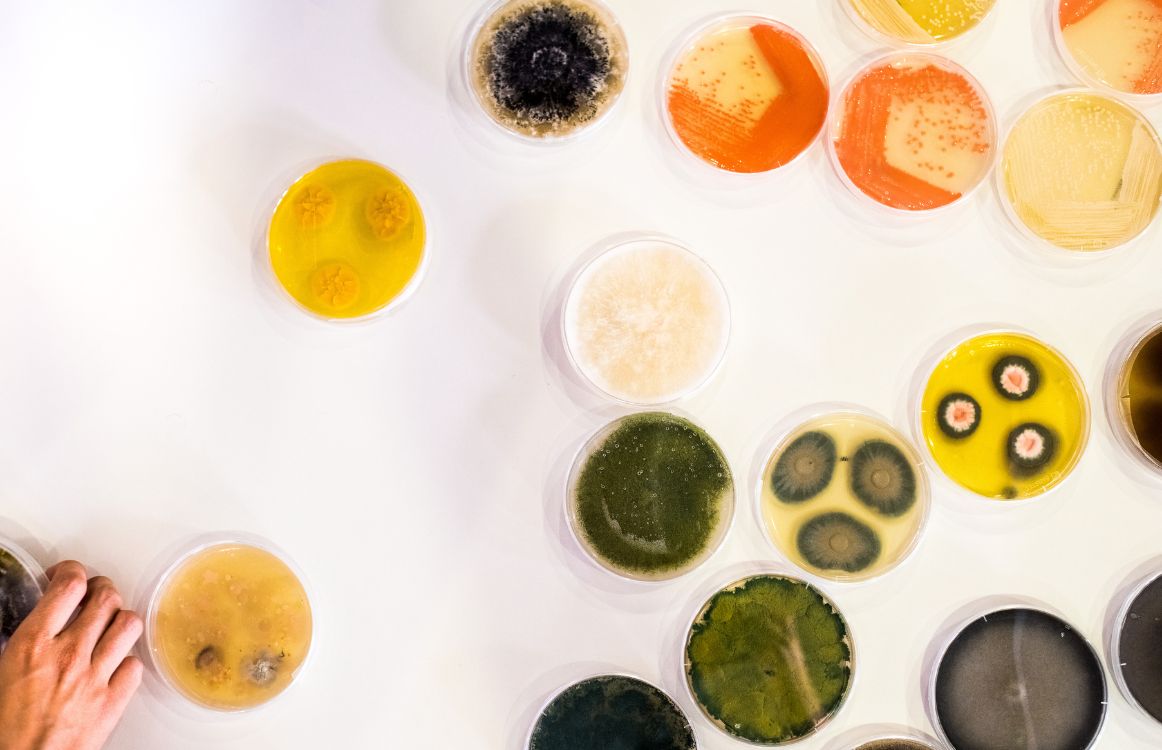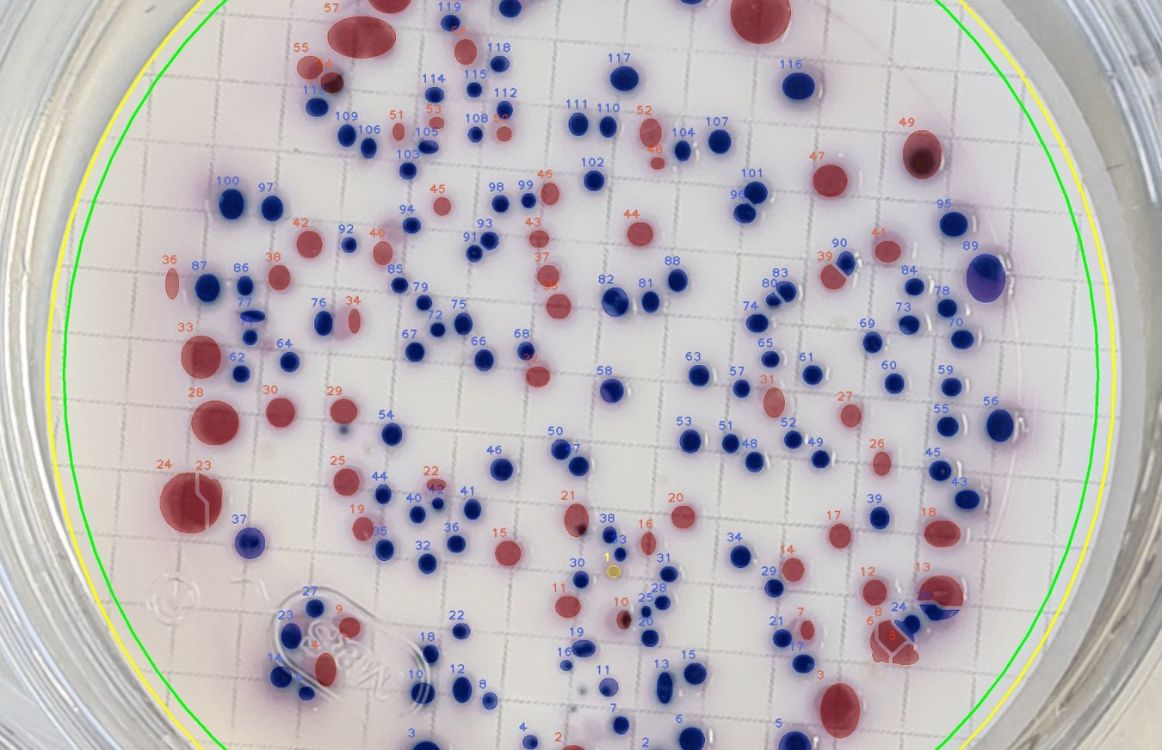Petri Dish Bacteria Identification Chart: Why Use One

A Petri dish bacteria identification chart can be a helpful tool to have in the lab, whether you’re just looking for comparisons or hoping for the first time to see what bacteria might look like in your own lab. It always helps to see what others have done and how your work might look in relation to the work from labs doing similar work. But first…
What Is Petri Dish Bacteria Identification?
Petri dish bacteria identification is fascinating lab work. It involves collecting bacteria, diluting it, and swabbing it onto agar in a Petri dish. Then, lab technicians will incubate the dishes and utilize the visual sense to describe the bacteria.
Those descriptors can then help you figure out what bacteria you’re dealing with and how what you have on your hands compares to the data of other labs.
Get access For Free to our comprehensive How to Count Colonies on Agar Plates PDF Guide (19 pages) put together by our specialists, Dr. Katja Schulze, who specialized in bioinformatics and image recognition of microscopic images, and Dr. Ulrich M. Tillich, who specialized in laboratory automation!
How Bacteria Is Collected
To collect bacteria, doctors may take swabs from sick patients, scientists may take samples from food or waste, technicians might take samples from water or earth.
Bacteria thrive in the most unlikely of places and can survive even in the most extreme circumstances. The trick to collecting bacteria is to take every precaution to select only the bacteria under hygienic conditions.
Once it has been collected and kept in a sanitary vessel, the common practice is to dilute the sample by a factor of 10, which means to take one part of the sample and mix it with 10 parts of saline or filtered water. Then, the diluted sample should be diluted again by another factor of 10.
At this point, the bacteria should be diluted enough to identify with the naked eye without the bacteria crowding the Petri dish.
To get the bacteria onto the Petri dish, swab the diluted sample with a cotton swab and smear the sample onto the agar in the Petri dish in a tight zigzag pattern, reaching from edge to edge of the dish.
Then, turn the dish 90 degrees and repeat this zigzag pattern in the same way, so you can ensure the entire agar is covered with the bacterial sample.
At this point, you’ll place the lid on the dish and flip it upside down, incubating it for as long as this specific bacterium requires, typically between 18 and 36 hours.
How Bacteria Is Identified
Now that you’ve collected your bacterial sample and incubated it to allow it to grow, you can begin to identify and describe it.
You’ll use terms that relate to various aspects of its appearance like size, shape, texture, color, and so much more. You can read more about it in our article on how to describe bacterial samples.
Petri Dish Bacteria Identification Chart
The reality is that the best chart you can ever use is the one you’ll create yourself. Because it really depends on what you’re looking for, what type of bacteria you’re working with, but, also, just your style and preferences. At the end of this article we’ve listed a few useful resources you can use to get an idea of how your chart can look. From there on, you’ll have to collect images, create categories and simply shape the chart to your liking.
Oculyze Can Help
When it comes to simply counting the CFUs, in the end, you can cut time, energy, and money by allowing an app to count them for you and do the calculations to factor back up. This approach also allows you to trust human error has been eliminated as long as you use a reputable provider.

Oculyze has come onto the market to offer a more intelligently designed and extremely accurate colony counting software. We’ve partnered up with agar plates producers to provide the simplest process and solution for lab people.
Once you’ve swabbed your culture and you’re ready to begin counting, you simply have to:
- Scan the QR code that came with the pre-poured plate or the dehydrated agar.
- Immediately, the Oculyze Web App (no installation required) gets loaded with the image recognition tailored to the specific type of plate being analyzed.
- Take an image with your smartphone, tablet, or desktop PC with an attached camera. The results are shown in less than a second.
You can read more about this on our Colony Counter page. And next time you talk to your agar plates distributor, ask them about the possibility of integrating this service.
You can also Test our Colony Counter completely free of charge and with no commitment to purchase.
Just please note that the recognition provided here is solely for demonstration purposes and may not accurately represent the performance of our product. Our customers receive customized recognitions tailored to their specific needs, which ensures high levels of accuracy for their plates.
Sources:
- https://www.pinterest.com/pin/identifying-bacteria-in-petri-dishes–304907837254961877/
- https://www.researchgate.net/figure/Antibacterial-activity-of-allicin-vapor-The-Petri-dish-base-with-bacteria-either-spread_fig3_320361559
- https://microbiologysociety.org/why-microbiology-matters/what-is-microbiology/bacteria/observing-bacteria-in-a-petri-dish.html


